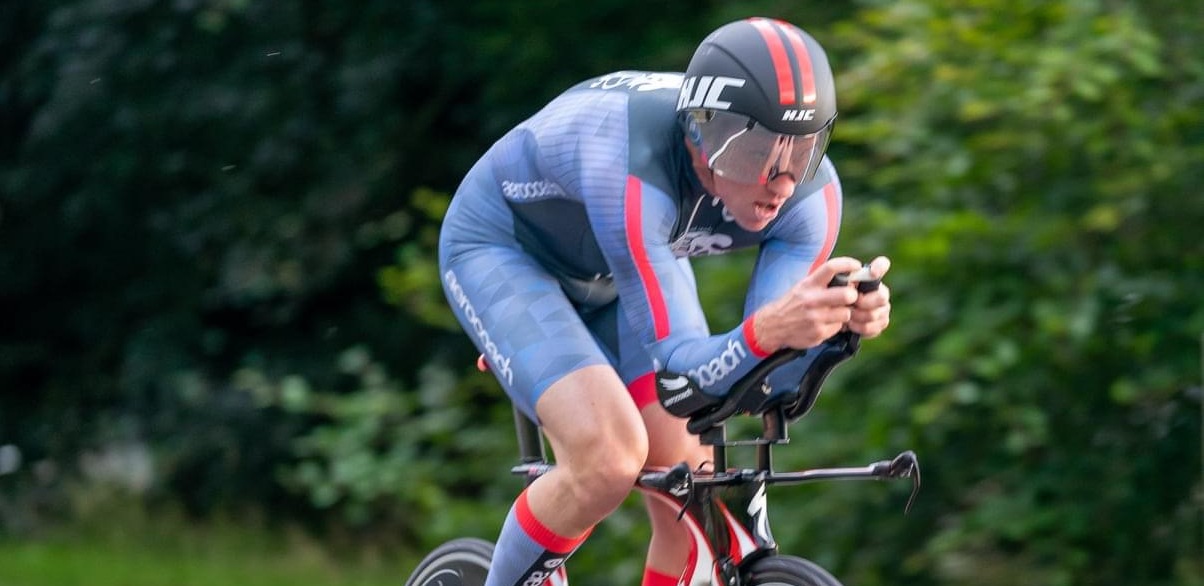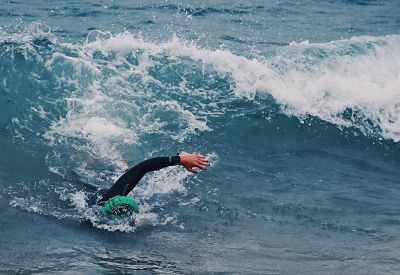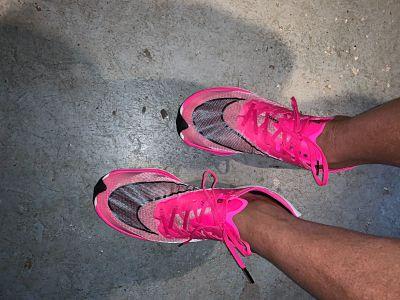For those that missed it, one of the most complex logistical exercises in triathlon recently took place. No, it wasn’t a hoard of rookie athletes packing for their first full-distance race, it was Kristian Blummenfelt, Kat Matthews, Joe Skipper and Nicola Spirig separately attempting to stitch together the fastest ever Ironman-distance performances at the Sub7/Sub8 Project.
A race, publicity stunt or lab experiment?
At first glance, it was hard for many to understand whether this was a race, a publicity stunt or just someone’s idea of a giant lab experiment... and I’ll be honest - I didn’t really get the point of it when I first heard about it.
In my view at the time, the athletes were using teams of pacers and helpers to artificially manipulate or cherry-pick the physics that typically slow us all down when we race and then produce an unrealistic performance.
It also wasn’t the first time something like this had happened. Back in 2019, runner Eliud Kipchoge achieved the first sub-2 hour marathon utilising an armada of pacemakers, information relay and aerodynamic strategies that frankly boggled the mind. The end result was a massive success but it’s hard to know how to place the performance in the context of competitive sport.
That being said, I knew some of the helpers involved in the Sub7/8 Project so, like many others, I tuned in out of idle curiosity. Due to the excellent commentary and coverage, I quickly got sucked into the affair and the indoor ride I was doing turned into a marathon cake-fueled debacle (one that surely resulted in me gaining more calories than my efforts had burned!).

To summarise, all the teams were limited to a maximum squad of 10 helpers which then effectively combined a lab experiment with a tactical game of chess. You had to deploy the right people, in the right number, in the right order, at the right time, otherwise your triathlete would 'blow up' and the game was over.
In reality, this record needed an innovative outlook and a clean slate approach to make one person move as fast as possible with as much help as the event's rules allowed. Being limited to a team of 10 people meant they couldn't replicate what Kipchoge did with his marathon, for example.
In that case, Kipchoge deployed a huge arrowhead formation of pace-making runners that was designed to shield him from any wind. He then received live intelligence in the form of projected lasers to indicate the right pace to run at. Hell, I haven’t been around a large group of people moving in close proximity coupled with lasers flashing since going out dancing in the 90’s.
All in all though, the important thing was to know if there was anything here that 'Joe' or 'Jane Average' could take away from this whole exercise. Did any of it really matter or was it just an exercise in vanity or showmanship?
What age-group athletes can learn from Sub7/8
Firstly, it goes back to what I’ve said before: you should look at competitive sport as a problem to be solved. A clean slate approach to then resolving the problem prevents us from falling into habits, fashion or assumption.
My current race season has benefitted massively from a complete tear down of how and what I ride. I've basically started again and asked the question ‘why?’, before then finding the evidence to inform my choices.
Secondly, the whole thing for me was a timely reminder that today’s Formula One car is tomorrow’s family saloon. Every piece of equipment that you spotted the pros using will likely make its way to your bike, shoes or clothing in good time.
Furthermore, it reminded us that hydrodynamics and aerodynamics remains hugely relevant, no matter your level of ability. Physics doesn’t opt in or out based on whether you win or not. It’s an ever present drag (literally!) on your limits.
For example, positioning yourself on the feet or to the side of a faster swimmer’s hip will see you get a faster swimming time or the same one for less energy expended. You don’t need to be a pro to enjoy the benefits.

Likewise for cycling, consider the fabric of the clothing you’re wearing, the tyres and your drivetrain. One of the biggest gains in speed I’ve made in the last five years was in my skinsuit choice alone. I probably invest more in fabrics annually than carbon fibre parts because it's where the main gains lie. I saved 25 seconds in my 10-mile time trials based on that alone.
That being said, I noted in world tour rider and helper Alex Dowsett's YouTube blog that they also used a tyre that's not measured to have the lowest rolling resistance so they actually gave some speed up in my view.
I personally don’t like to compromise but you do need to balance speed with reliability when it comes to tyres – particularly in triathlon where a flat can be a sour end to your day. The more obvious gain here was in their slipstreaming and drafting, but this is only valid if it’s legal in the race you’re doing. If it is though, you can save huge amounts by being on the wheel of another rider.
Even being a little further away still provides some level of effective shelter and it all gets very complex, but even more effective, as the Sub7/8 ride proved when you include a larger group of cyclists.
Additionally, pacing is key here. Each of the cycling ‘domestiques’ knew how much power to put out, for how long (that in some cases was reported to be tailored to each individual rider by the engineers and scientists the teams used) and how much recovery to take.
In your case, this can be as simple as working a little harder when resistance is higher (such as on hills and in headwinds) or just not going out and blowing your barn doors off in the first mile of your ride. Test properly, know your potential and work with the power you know you can produce. By the way, if you’re curious about this record, you can find Dowsett’s ride on Strava.
Footwear, nutrition and cooling
Finally on the run, the three things that jumped out to my eye here were that of footwear, nutrition and cooling.
In this case, most of the four athletes were wearing modern composite footplate running shoes. You’ve heard the controversy, we’ve debated the ethics, but the bottom line is that you could (depending on your bodyweight and running velocity) save large amounts of running time by wearing such footwear. It’s a huge amount of free speed (albeit not financially!).

Being handed the right nutrition, in the right amount, at the right time was also crucial.
Conditions at the Sub 7/Sub 8 were warm. Personally, I’ve worked closely with Andy and the team at Precision Fuel & Hydration over the last year to dial this in for when I race, but either way, like any race car, fuel needs to be optimised to get the best from the machine.
Joe Skipper was seen with a cyclist spraying him with water (or possibly alcohol) to act as a cooling agent. ‘Weedkiller man’ has now become a bit of celebrity within the realms of this event, but keeping core body temperature down is important to minimise heat-related illness. A cold sponge, a cup of cold water – it could all help you keep it together whilst your body wants to head for gas mark 9.
By the way, even whilst writing this blog, I went back to the livestream to rewatch a few things, got sucked in again, lost two hours and missed dinner. Why? Because I’d ultimately realised I'd missed the point. The point was that it wasn’t a giant exercise in science, it was a giant exercise in fun.
